The First Driving Game For A Home Console Required A Hell Of A Lot Of Imagination And Some Math
I've covered some of the history of driving and racing video games before, including finding the oddly Volkswagen-sourced origins of first-person driving video games, tracking the evolution of how video game cars looked, and, of course, showing you the worst driving video game of all. Today I want to give you a look at the first auto racing-based video game for a home console, way back in 1972, so you can shake your heads in confusion and pity at the sorry crap people had to put up with. I'm being too harsh—in context, this is all pretty incredible.
The first home console driving game was called Wipeout, and it was designed for the Magnavox Odyssey, the very first home video game console ever.
Being the first of its kind meant that the Odyssey had some pretty severe limitations; keep in mind that this is 1972 we're talking about, here. The Odyssey was developed by Ralph Baer starting around 1967. The first microprocessor was Intel's 4004, which was released in 1971—development of the Odyssey predates that first CPU, so, as you can imagine, it had no actual CPU.
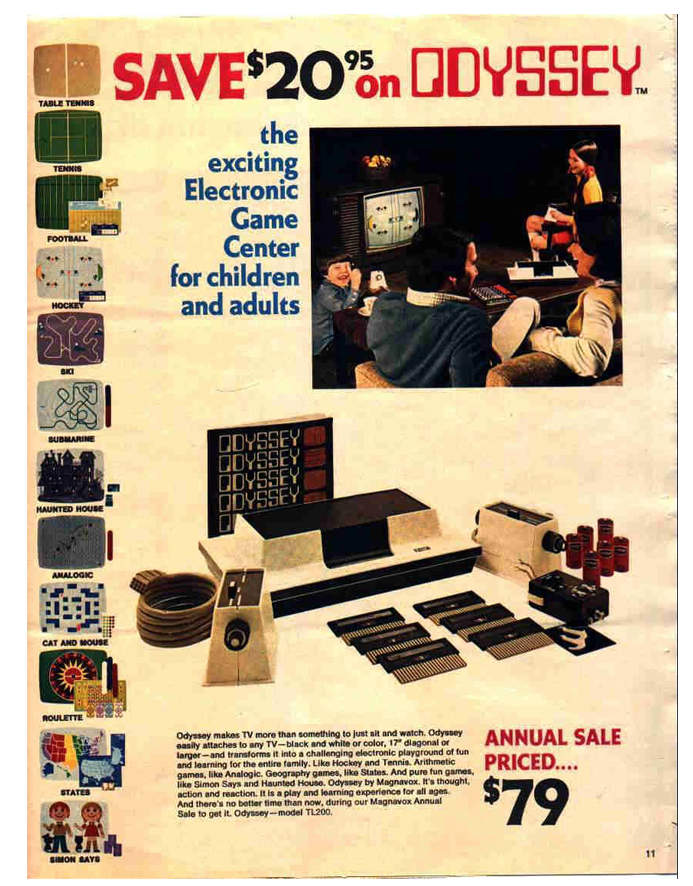
It was a very clever and very crude system, but absolutely state-of-the-art for its era. The state of that art, though, meant that all the Odyssey could display on your television set were four objects: two big squares, one smaller square, and one vertical line.
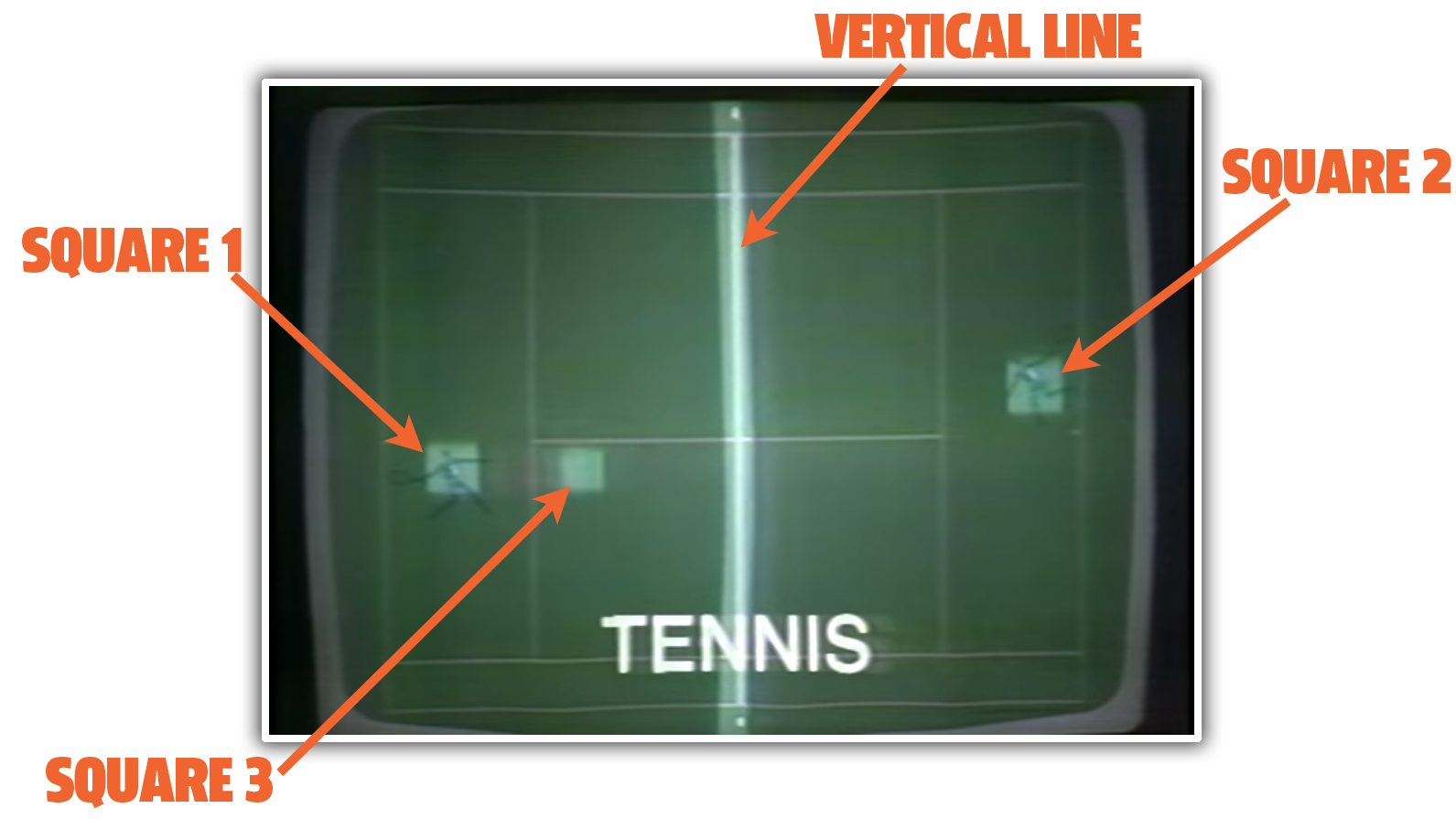
Put these things together and you get all you need for a game of electronic ping-pong, the primary game of the system, later "borrowed" by Atari and called "Pong."
Electronic ping-pong you could play on your television was revolutionary in 1972—hell, controlling anything in real-time on a screen was revolutionary in 1972—but Magnavox wasn't satisfied with that, and came up with a bunch of other games you could play with two big, controllable squares, one square the machine could move, and one vertical line.
It wasn't easy, and required the use of translucent plastic overlays you stuck to your TV screen and a bunch of board game paraphernalia, but they figured it out. One of these other games they figured out was a driving game, called Wipeout.
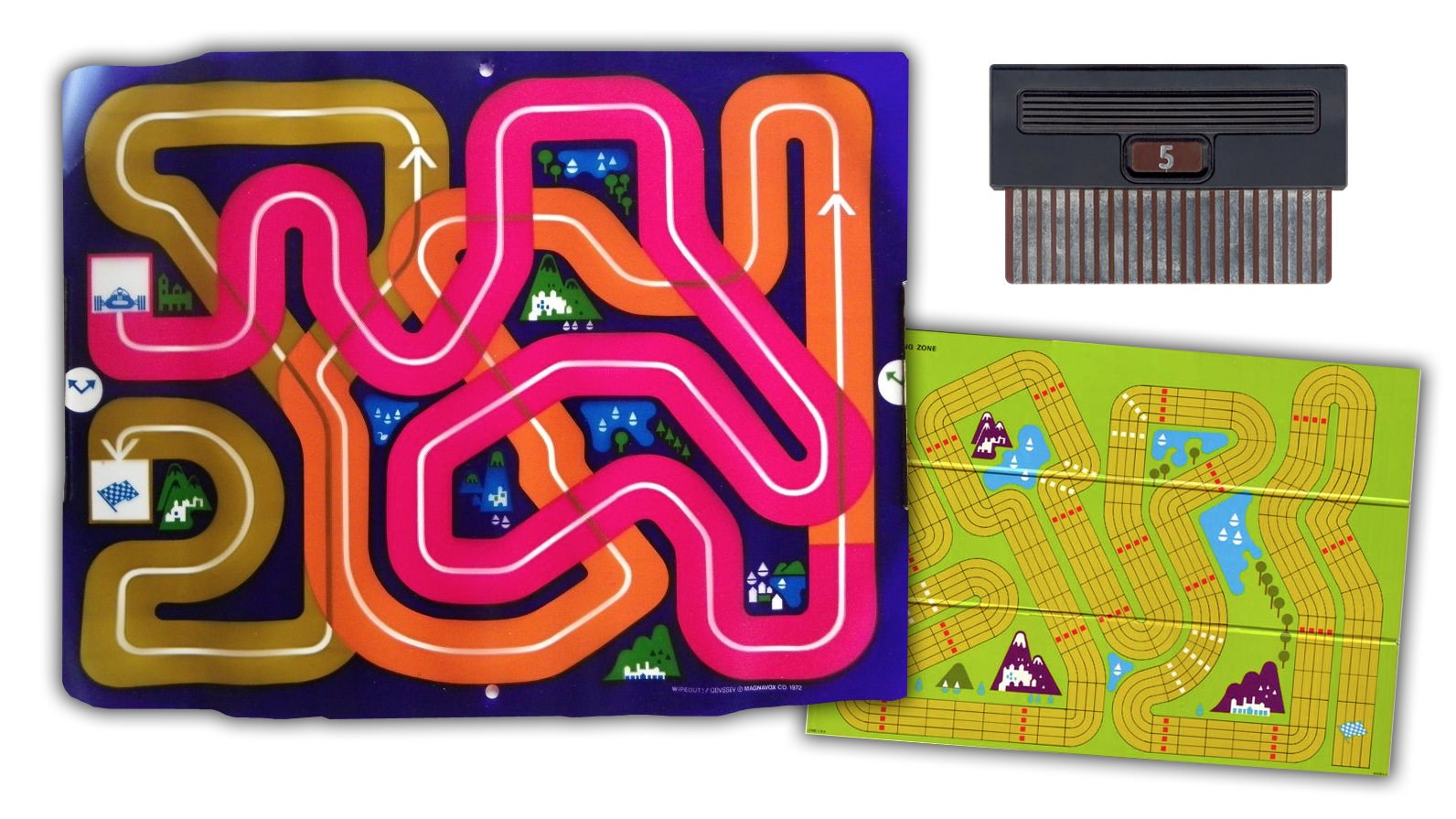
Keep in mind that Wipeout was a driving game that had to do everything with a block you could control, one you couldn't, and, uh, that's about it. So, to make these limited pieces into a driving game, Magnavox relied on a complicated, colorful overlay with a track that resembled the digestive system of an amphibian and a separate game board.
The game was essentially about driving along the track as fast as possible. You had to keep your car—a square—inside the track or you'd get penalized. Another player would be the "timer" and would click the reset button on the driver's controller to send the "ball" square across the screen.
The timer-ball then would hit the other player's block, set inside the little clock window on the overlay, which would bounce the ball back. Then they'd hit the button again, keeping count for timing.
If the car hit the timing block, there'd be a penalty. Of course, all these penalties would have to be handled by the players with their brains, since the Odyssey didn't keep score or even know where the track boundaries were.
Also, just driving along a path was pretty challenging, since you controlled your car with this:
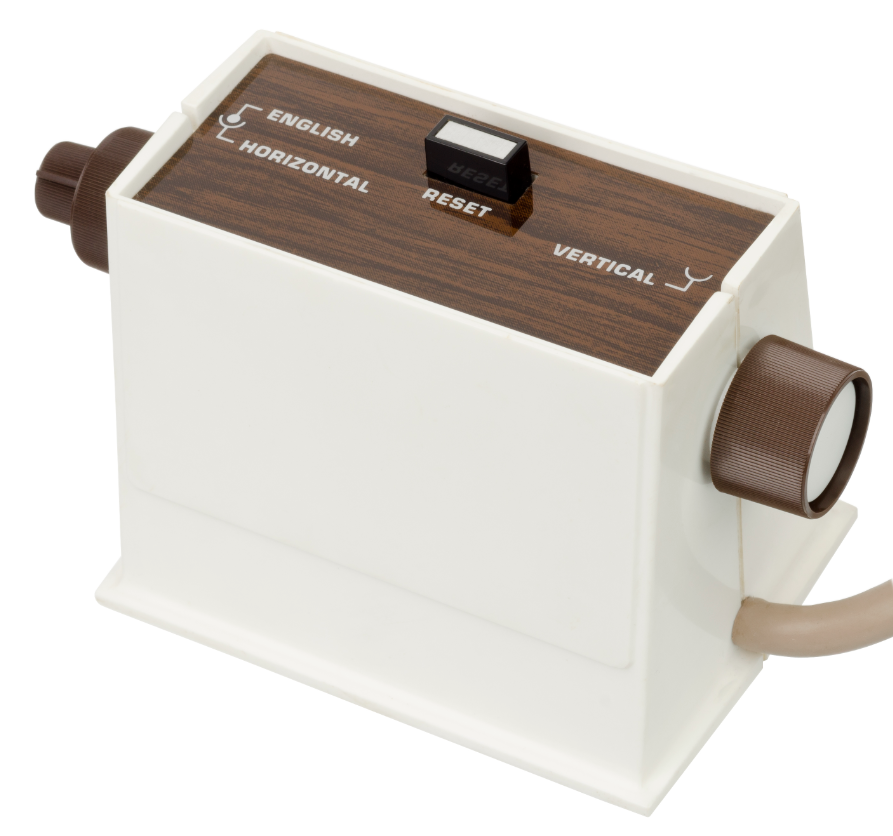
...which is sort of like trying to drive with an Etch-a-Sketch, since it has separate knobs for horizontal and vertical motion.
Oh, and if you wanted engine-revving or skidding sound effects, you were making them with your mouth, most likely accompanied by cascading fountains of saliva.
The game board was used to keep track of multiple drivers' results, and passing and other gameplay features. It's a little confusing, but Armchair Arcade has a good description:
Addressing the videogame portion first. The overlay is a stylized racetrack, reminiscent of the twisted cargo fleet's course in Submarine. The players take turns acting as the Driver and serving as the Timer. Prior to a racing phase, the Timer uses the left controller to position their light behind the clock on the left side of the overlay. The Driver uses the right controller to control the light that represents their race car. The Driver's goal is to maneuver their light around the race track. The Timer's job is to hit the reset button (on the Driver's controller!) to "serve" the BallSpot so that it comes in from the right side of the screen, crosses the screen and hits the light behind the left side clock to deflect back across the screen and off the right side again. The Timer player does this throughout the Driver's journey around the track. The Driver starts with 30 laps in their count. Every time the Timer player hits the reset button, one lap is subtracted from the lap count. If the Driver leaves the track, they lose two laps. If the Driver's light is actually hit by the Timer's BallSpot, they lose a big fat five laps! The idea is to get around the track before the lap count evaporates entirely.
So, what is the lap count for? Is it just a score? No, it's more of a dice roll... which brings us to the boardgame portion of this.
There's an off-screen game board that goes with this game! The game board supports four lanes (for up to four players) and contains Passing, No Passing and Pit Stop Zones. When the player finishes his race on the screen, he uses the number of laps left from that race to move his little car token as many spaces forward on the board's track. Stopping in a No Passing Zone prevents other players from moving past that player's car. The Pit Stops on the board calls for the use of the Pit Stop! card deck. Card messages communicate a variety of good and bad: "Good Cornering! gain 2 spaces.", "Tire Change! lose 4 spaces." or even meta-directives like "Lady Luck! Use to cancel any pit stop card you pick." By getting lucky breaks with the Pit Stops, moving forward using the earned lap counts, and blocking others with the no passing zones, players race to the end of the board's racetrack to win the game. First one in gets the win.
Make sense? They say it's not complicated and also somehow fun, though I'm a bit skeptical. I did find a video of people actually playing it, so you can get a sense of what the very first in-home driving game action may have been like:
I mean, I guess it's sorta fun, in the same way that doing your taxes with a bunch of bored, drunk friends, a flashlight, and an abacus might be kind of fun.
I'm sure in 1972, though, this would have been the equivalent of getting your friends together today to play some kind of immersive hologram racing game that actually had you floating on some kind of hovering seat, surrounded by high-definition racetrack holograms. Or maybe just a VR headset game.
Trust me, you would have impressed everybody at your key party.
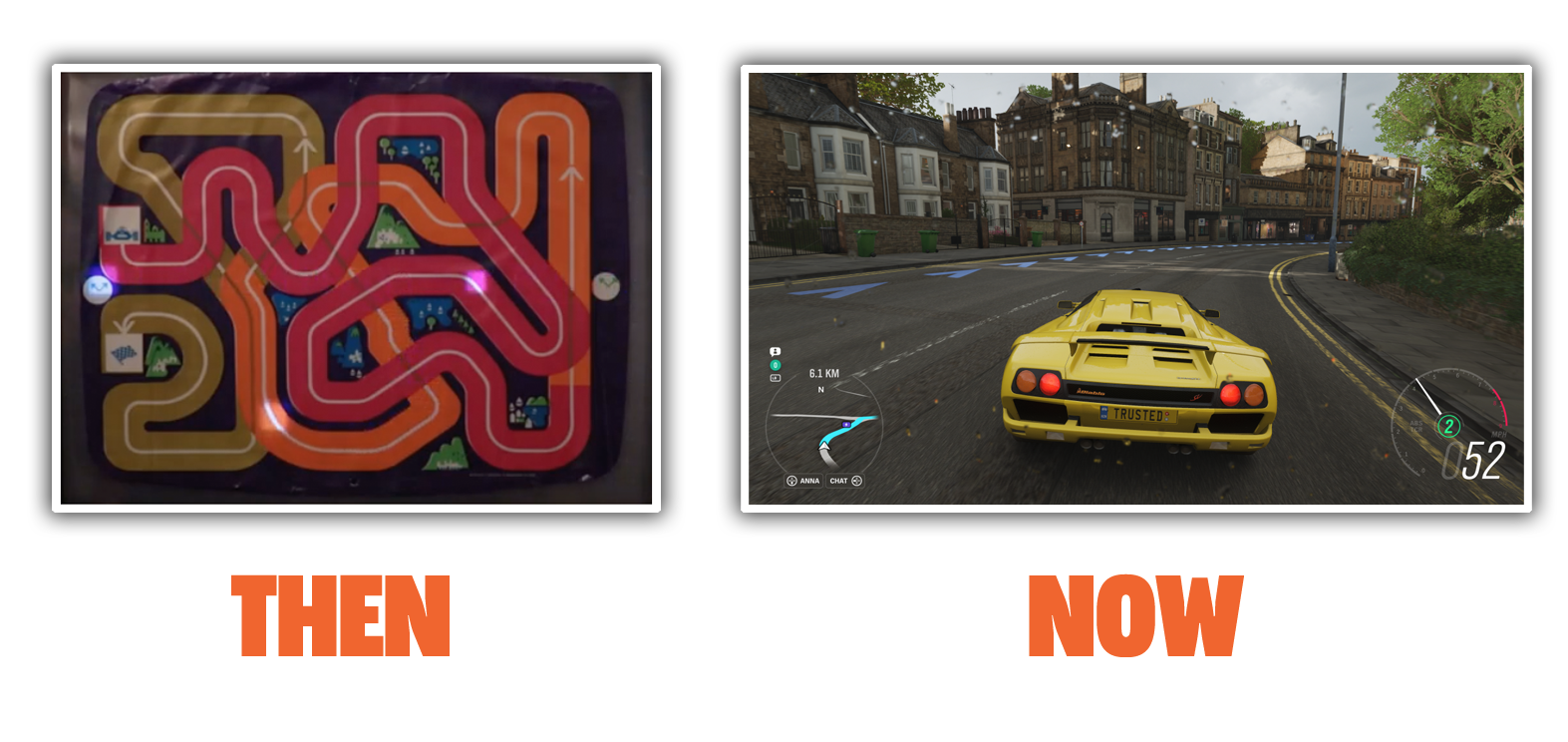
It's fascinating to see just how far we've come in 47 years, from a white block you clumsily move around behind some cellophane to driving virtual cars that are almost indistinguishable from actual video of cars.
